Here’s an unanswerable question to kick things off: does a critic or reviewer need to play through the entire game before publishing their review? The reason I ask is that Baldur’s Gate 3 is a massive game, and a lot of reviews that were published on release day or shortly after state up-front that they’re based on an incomplete experience.
That could be the topic of an entire article one day – and perhaps it should be! But for now, suffice to say that the reason my review is being published a month after Baldur’s Gate 3 launched on PC is because I took the time to complete the main campaign. As a result, I have a few things to say that I feel some early reviews glossed over or didn’t make mention of. The middle and latter parts of the game are a little different – and in some ways may feel slightly less polished than its opening act.
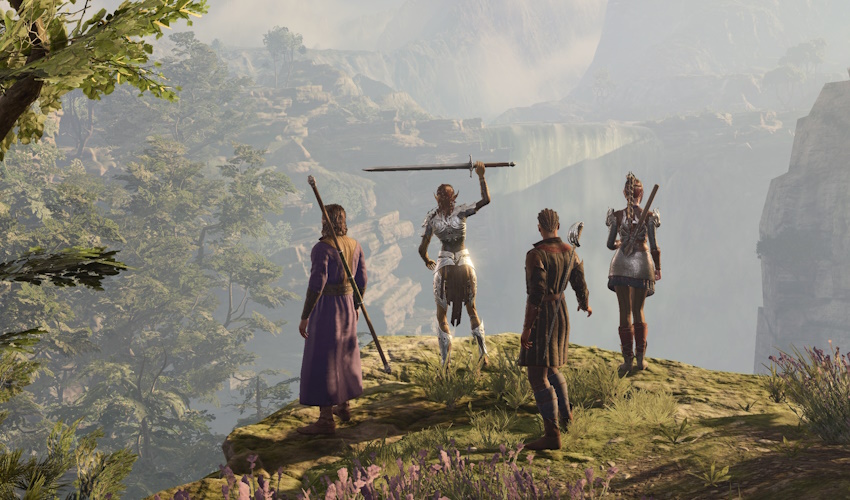
But let’s take a step back! I recently completed a single playthrough of Baldur’s Gate 3 – and there’s a case to be made that even a playthrough that lasted more than 85 hours and took in as much exploration and as many side-quests as possible still isn’t thorough. I definitely haven’t seen or experienced everything the game has to offer! That’s a great thing, in my opinion, as any game that offers that kind of replayability is fantastic.
As things stand right now, in early September, Baldur’s Gate 3 is the best game I’ve played this year – and there’s no competition. This game hadn’t even been on my radar until a few weeks ago, so from my perspective it basically came out of nowhere! As someone who’s been playing games for well over three decades, getting that kind of experience is an increasingly rare phenomenon. I’m in love with Baldur’s Gate 3, and even at its most frustrating or difficult moments, I found myself inexorably drawn to the game. Finishing the story and seeing the credits roll was bittersweet! Coming to the end of such an amazing adventure left me feeling simultaneously thrilled at what I’d experienced and devastated that I couldn’t experience more of it!
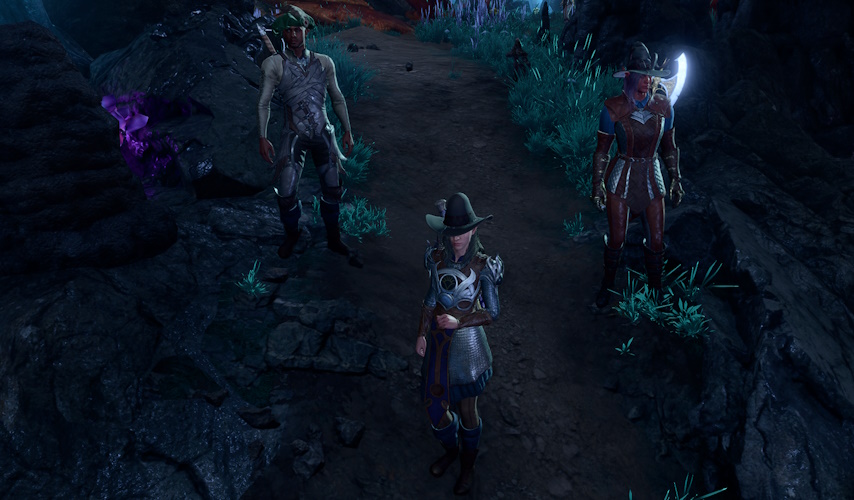
In the ’90s, I missed out on the original Baldur’s Gate games. I wasn’t into Dungeons and Dragons, and I felt that turn-based CRPGs were less exciting and less fun than “Doom clones” (as we used to call first-person shooters), action-adventures, and even real-time strategy games like Command and Conquer or Age of Empires. So while I was dimly aware of Baldur’s Gate and its sequel, they were never titles that I felt any interest in trying for myself at the time.
I came to Baldur’s Gate 3 with basically no expectations. Sure, there had been some good reviews, and developer Larian Studios had received praise for Divinity: Original Sin and its sequel, but I really didn’t know what I was getting into. I don’t know the first thing about Dungeons and Dragons or its lore, and having never played the original Baldur’s Gate I was completely unfamiliar with the world I was about to experience.
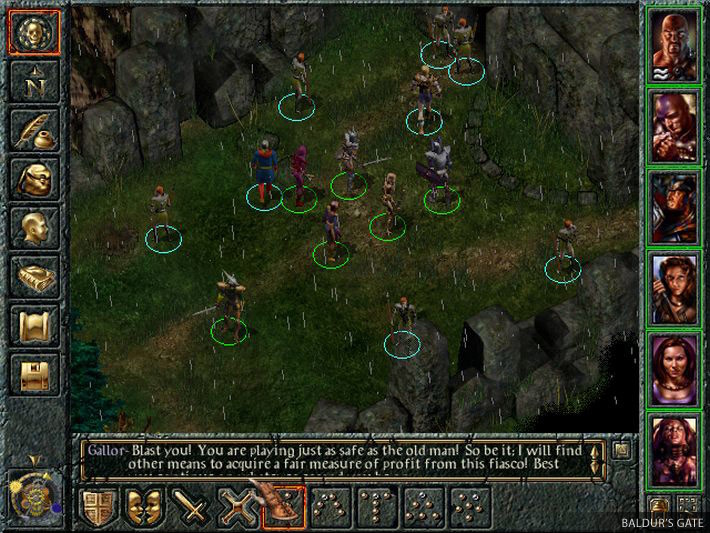
Baldur’s Gate 3 catapulted me right into the story! The game’s introduction was dense and heavy, with a huge array of options in the character creator and an explosive opening chapter to the story to contend with. For someone brand-new to this world, it was a lot to take in all at once. I felt overwhelmed more than once in those first moments – and that feeling came back multiple times during the first few hours. Baldur’s Gate 3 didn’t hold my hand – and while it may feel much more accessible than CRPGs did in the ’90s, players coming to the game having played modern action/RPGs like Cyberpunk 2077 or Skyrim might find the sheer density and wall of content to be offputting.
That’s not to say that Baldur’s Gate 3 is “too hard,” not by any means. Some combat encounters are challenging, and at higher difficulty levels you’re in for a tough fight! But figuring out how to effectively use the right combination of spells and weapons, as well as how to solve puzzles and complete quests was, for me at least, all part of the fun. There were some frustrating moments where I felt I’d come up against an impossible challenge – but I soon found that I could usually figure out where I was going wrong and, at the second or perhaps third time of asking, make progress.
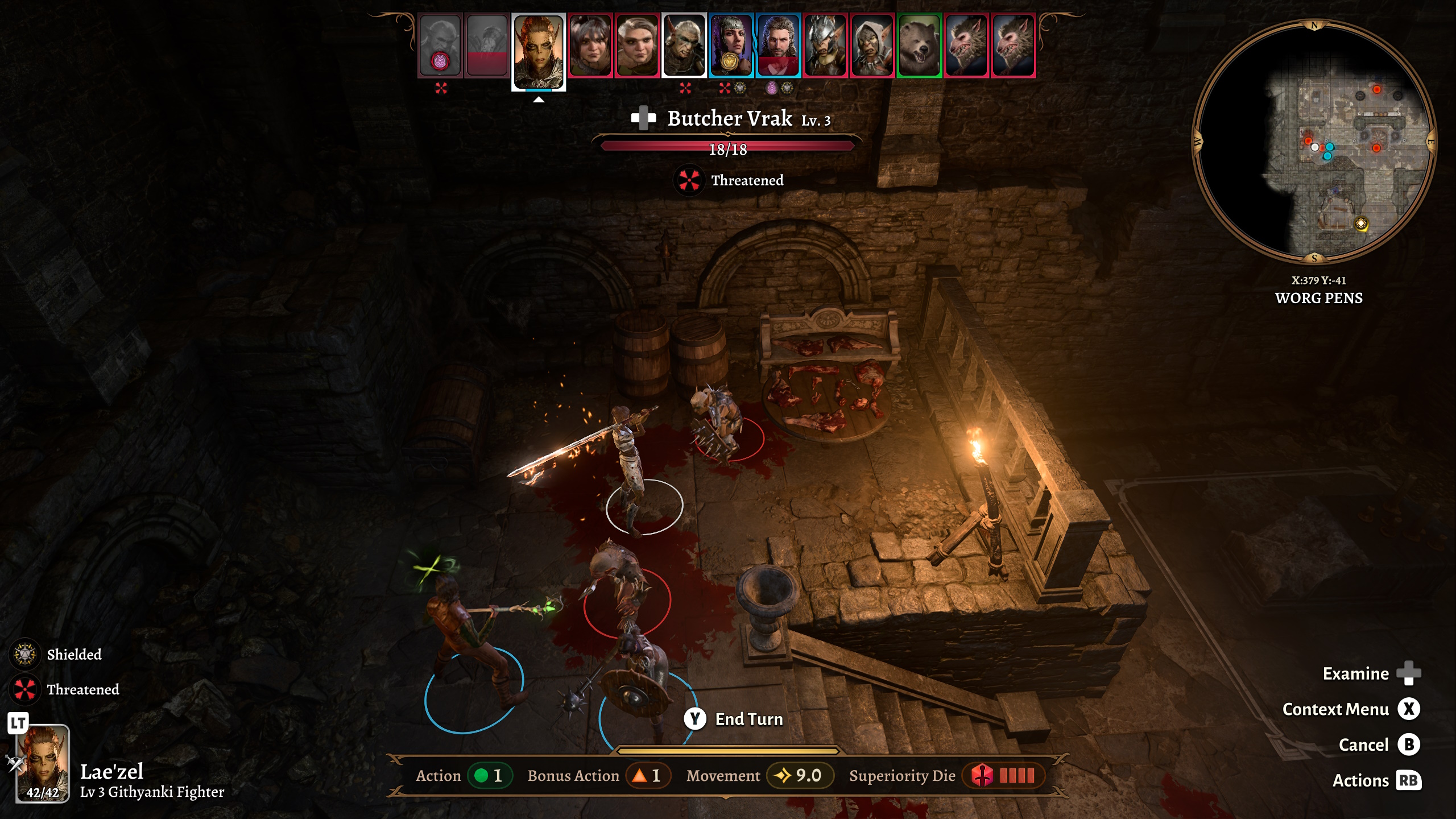
Baldur’s Gate 3 has been praised for its polish – and rightly so, for the most part. But I would be remiss not to mention that I encountered a few bugs and glitches during my playthrough, as well as some dodgy enemy and ally AI that could be frustrating. Although most of these were occasional or one-off issues, here are the ones that spring to mind:
- Being able to pick up “null items” that didn’t exist,
- Enemies repeatedly trying to open locked doors over and over,
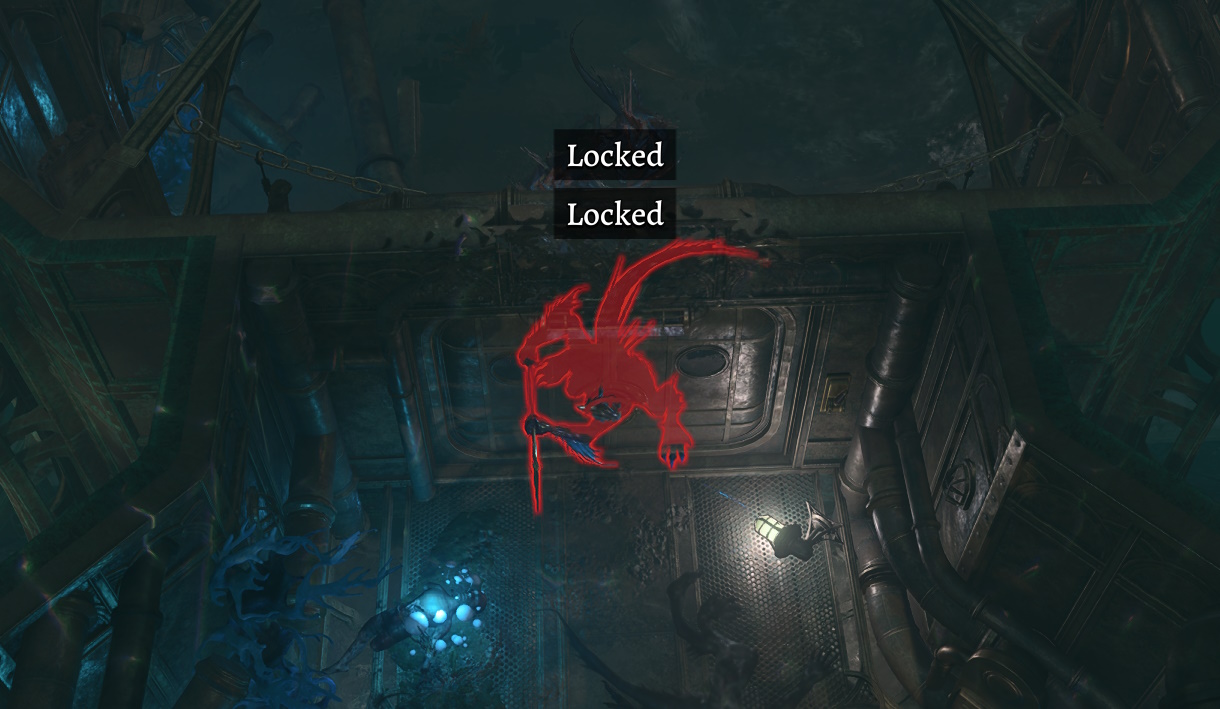
- Subtitles not showing during dialogue,
- Characters getting stuck or being unable to navigate an open doorway,
- Parts of a character’s skin/costume going missing,
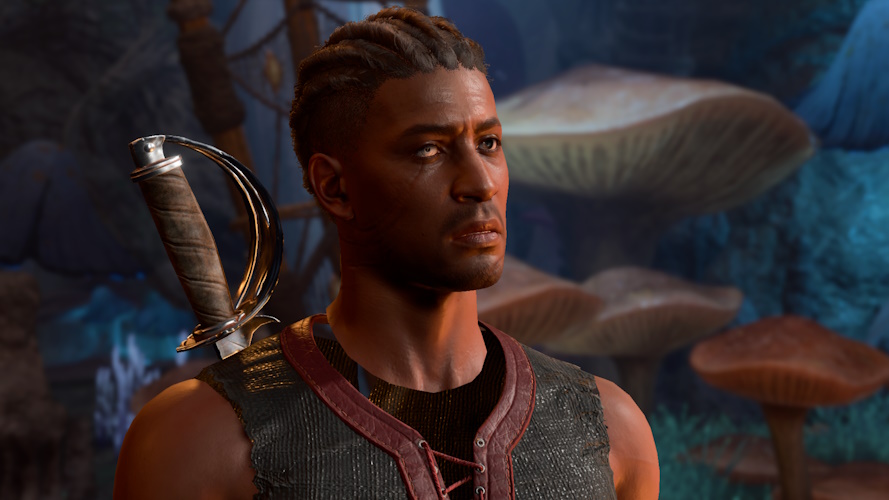
- Enemies and allies both charging head-first into fire or other environmental hazards,
- Characters seeming to “freeze” and take no actions in combat when it was their turn,
- The camera pointing in the wrong direction (or at nothing at all) during cut-scenes,
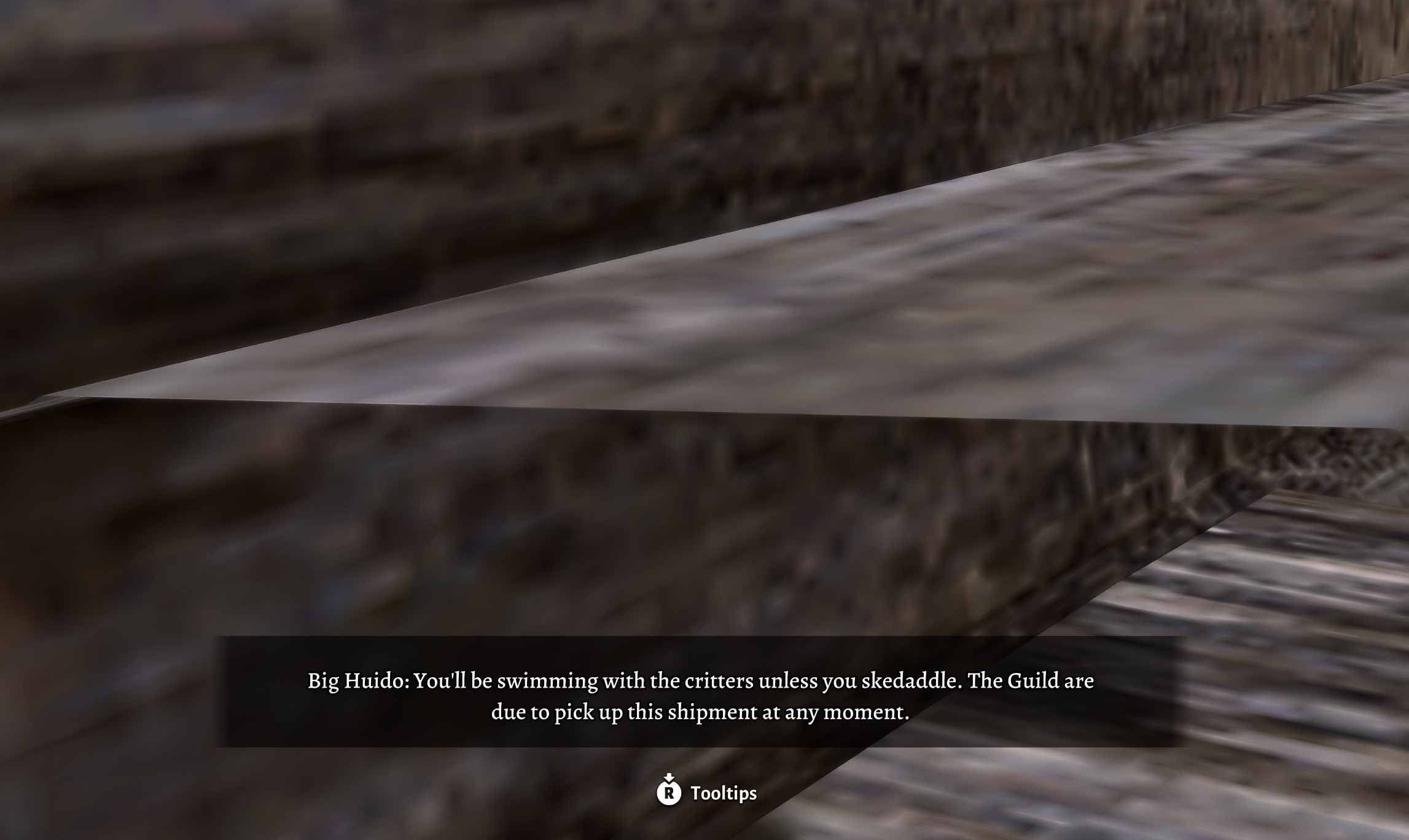
- A quest marker that pointed to the wrong place on the map,
- A mission-critical character in the latter part of the game who was randomly dead during a quest.
While I didn’t encounter any hard crashes – not a single one in over eighty-five hours of playing – nor any bugged or broken quests, I’m treating Baldur’s Gate 3 a bit more harshly on the bug front than I otherwise would, and that’s for one primary reason: this is a game that spent more than three years in early access. There was ample time to polish the experience and to take on board feedback from players. Some of these bugs occurred during the first part of the game, which is the part that was available to play during early access, so I really don’t give Larian a lot of leeway here when it comes to bugs.
Are bugs inevitable in games? Sure. Is Baldur’s Gate 3 one of the least-buggy titles so far this year? Absolutely… but that’s a low bar. Given how long the game has been in development, and especially given how long it spent in early access, the fact that basic things like subtitles or character models could be problematic isn’t great. While there are some mitigating circumstances – such as the game’s launch being pushed forward by over a month – I still think more could have been done to mitigate these issues.
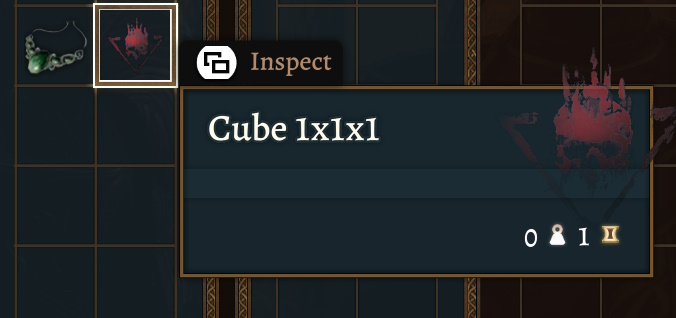
While we’re on this subject, let’s talk a little more about AI. Some of the characters in the game – and I’m including allies, companions, enemies, and occasionally the player character in this – could behave absolutely stupidly on occasion. Pathfinding when in turn-based mode could be particularly poor, and this is significant because character movement is strictly limited in combat and turn-based mode. Taking an unnecessarily long or winding route to a spot on the map or an objective can be the difference between being able to do something that turn or having to wait. Perhaps some of this could be explained by “user error” – but not all of it!
Then there were occasions where characters would damage their own allies, either by firing a weapon or casting a spell that impacted everyone around them. If I, as the player, chose to do something like that because I weighed that the benefits outweighed the cost, that’s my decision. But for the AI to make a move that crippled or killed some of its own characters… it just didn’t make a lot of sense to me, not when there were clearly other options available.
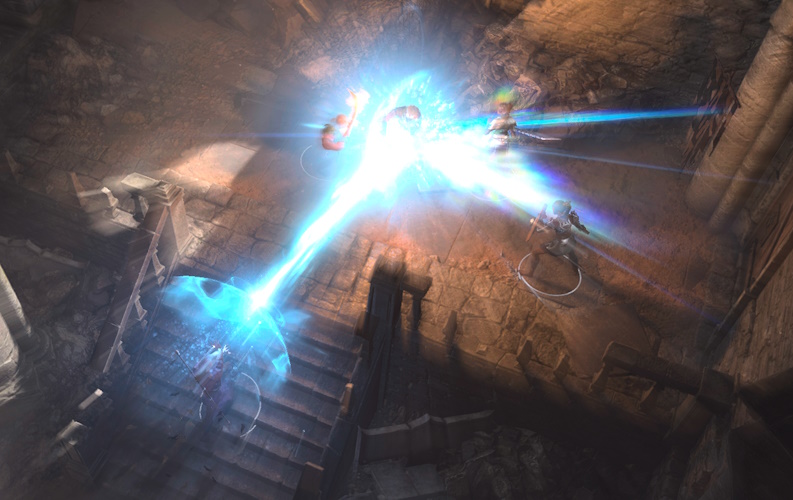
There were also a few let-downs when it came to the choices I made, and this is something that I definitely felt more of as the game progressed. Despite an impressive character creator offering backgrounds, races, classes, and more… I didn’t really feel that much beyond the class actually mattered. The way other characters in the world reacted to my character generally didn’t take my character’s race or background into account, and class primarily affected combat and stealth encounters. Considering the game’s lofty promises… only seeing a few lines of unique dialogue across eighty-five hours wasn’t as impressive as it could’ve been.
I chose to play as a dark elf/drow druid. And there were a few places where, as a druid, I got a line or two about nature… but the conversation would immediately return to other matters. As a drow, I didn’t feel that the way anyone in the world reacted to me was any different or would have been any different if I’d chosen to play as a human or a halfling. More could have been made of this, in my opinion, to really make these custom characters feel unique and part of the world.
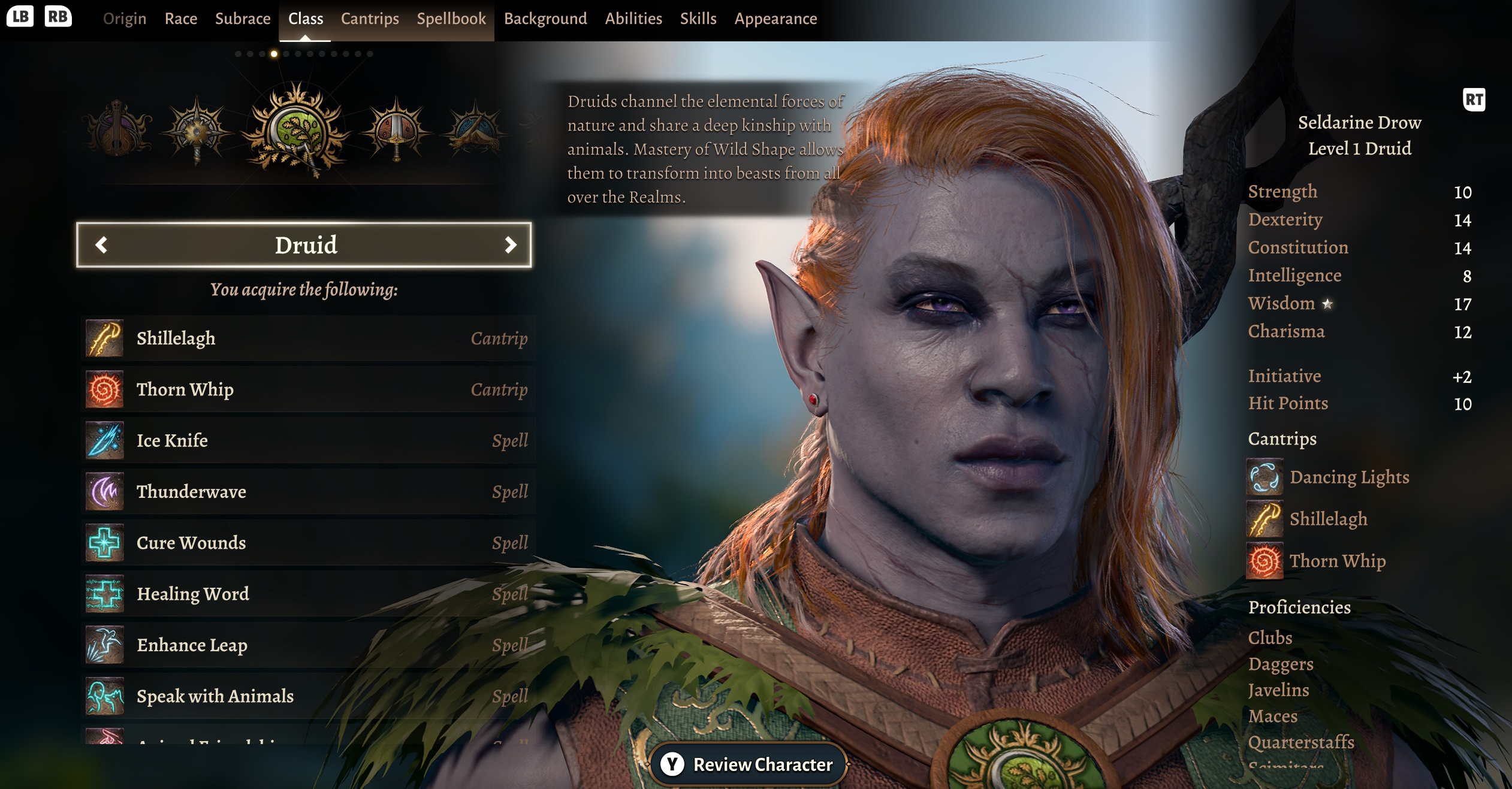
The same was true of character relationships. Without giving too much away, none of them felt particularly reactive – either to the character I chose to play as or to my actions. Occasionally a pop-up would display informing me that so-and-so “approved” or “disapproved” of a certain action or dialogue choice. But at no point did any of this approval or disapproval matter. You might get a different line of dialogue when next interacting with them, but after that they’d again go right back to the way they were.
We’ll have to get into more detail about some of these decisions later – I’ll be writing a second part of this review in the days ahead in which I’ll talk more about specific character moments and story beats and get into spoiler territory. But for now, I think I’ve made my point about the lack of reaction from some of the characters and the overall generic feel to the player-created custom character. Maybe choosing to play as one of the pre-made characters would negate this feeling, but for me – and I’d wager, for a lot of other folks too – part of the fun of a role-playing game is creating a character, either to represent ourselves or as an opportunity to become someone completely different.
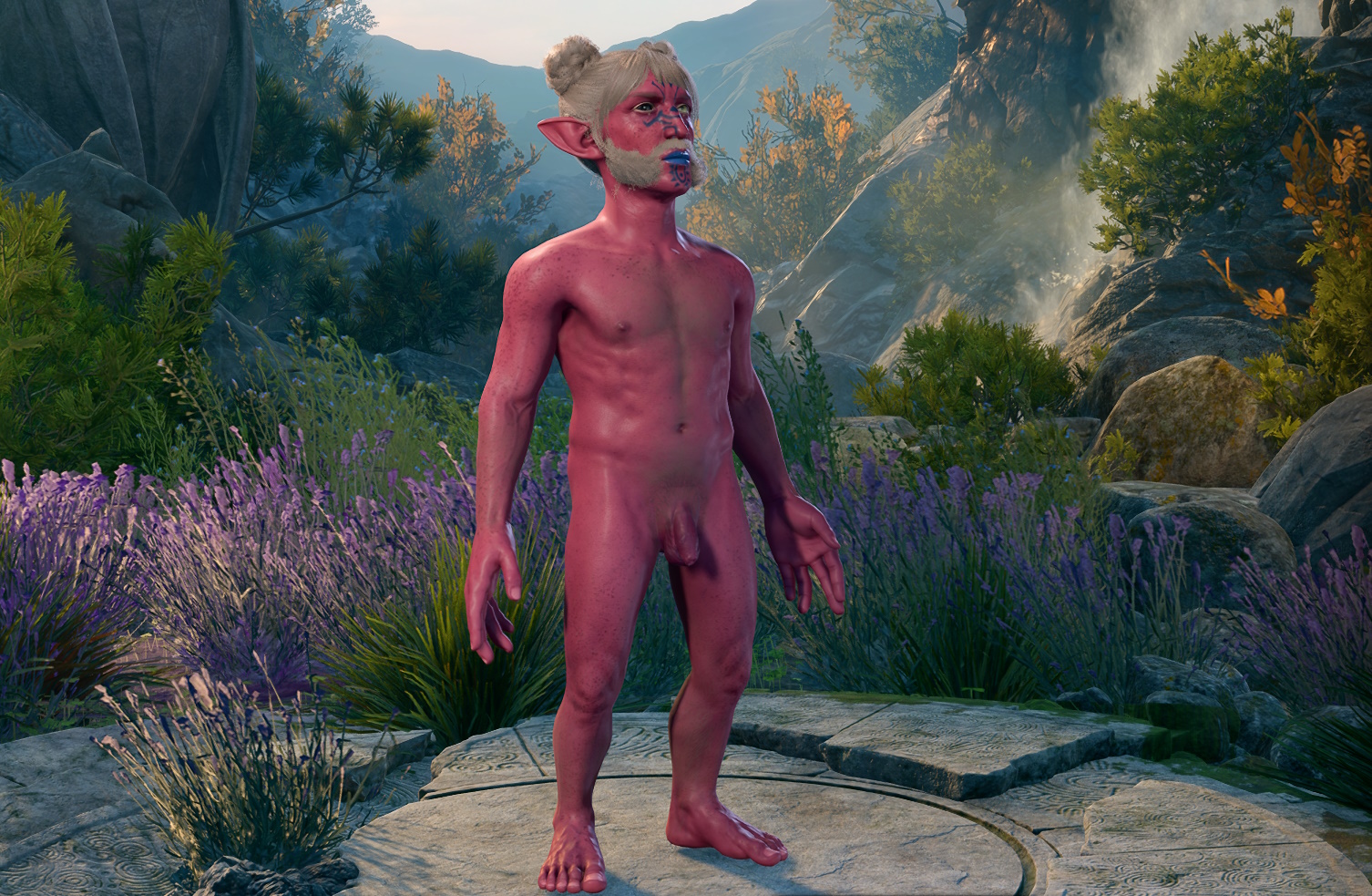
But I don’t want you to get the wrong idea. Baldur’s Gate 3 is a truly compelling game that sucked me in and kept me in suspense practically the entire time. No sooner had I finished one complex mission than another would present itself, and the incredible thing was just how natural and organic the whole adventure and story felt. Exploring an area away from where the main quest seemed to be leading would see me encounter an interesting character who would have an entire hour-long mission of their own to send me on. Or diving into a dungeon would lead to uncovering a secret item that would have a massive impact on one of the characters in the group, again kicking off a quest or even a whole line of quests. Baldur’s Gate 3 certainly found a way to make exploring its beautifully-crafted world feel rewarding.
Levels and regions in Baldur’s Gate 3 feel balanced – not too big and not too small. There are just the right amount of items and loot to make exploring feel worthwhile without being unnecessarily time-consuming. And there’s a beautiful diversity of environments – from dark, rat-infested dungeons to beautiful beaches and hills. Unlike some open-world games, which can feel too big, directionless, or bland, everything about the world of Baldur’s Gate 3 was fantastic; a masterclass in level design.
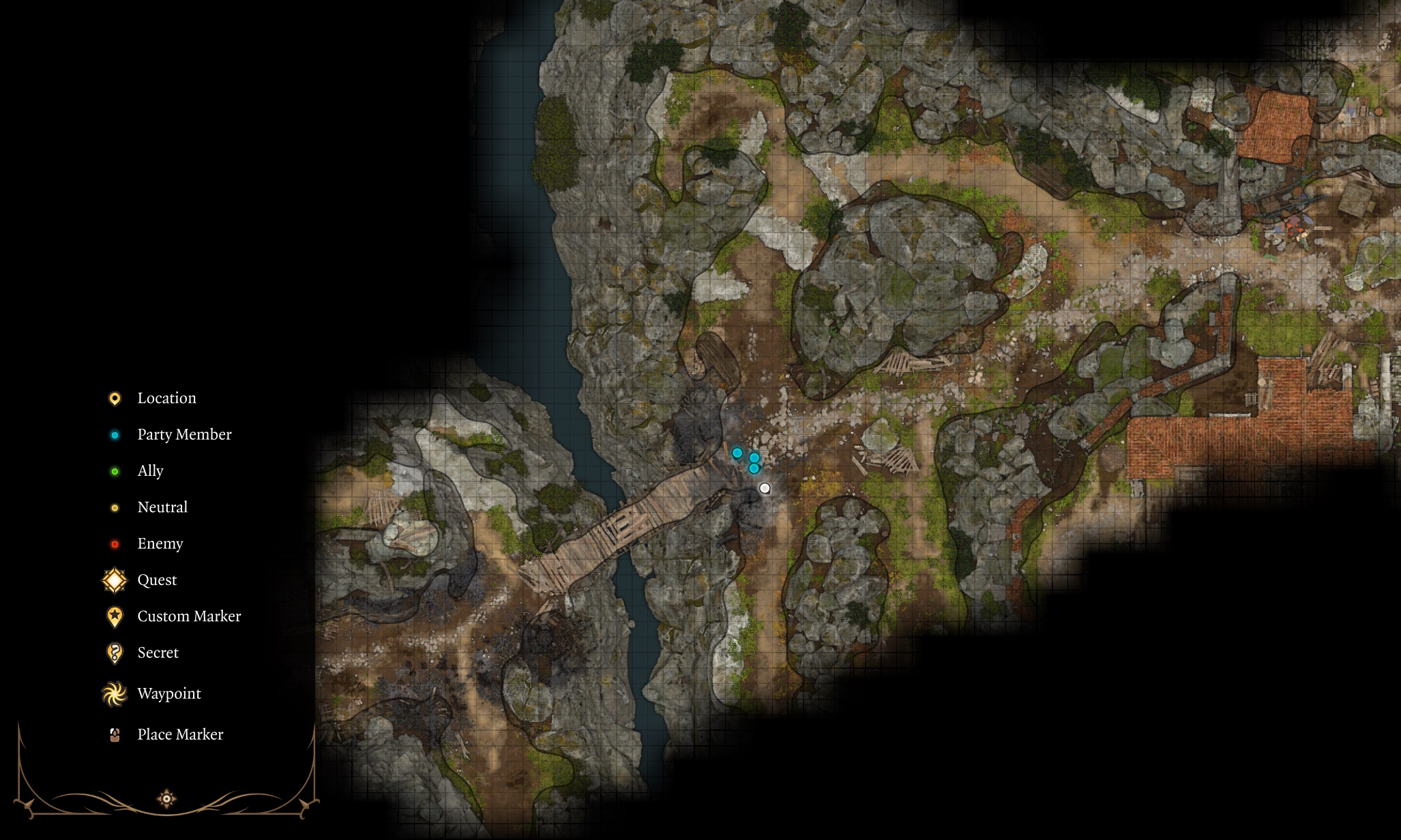
How many games have you played where enemy types would soon feel repetitive and boring? I can practically guarantee you that won’t be the case in Baldur’s Gate 3! The sheer diversity of enemy types was fantastic, with practically every combat encounter offering something different. There are many named enemies and mini-bosses to go along with the bigger, badder bosses, too – and again, each of these feels unique and different from one another. There are factions that oppose you along your quest – but even when fighting the same group, the sheer array of characters, and the differing combinations in which enemy groups can be deployed, really worked to make each fight feel different from the last.
This diversity extends to friendly and neutral NPCs, too. There are so many different characters to meet, and practically all of them feel like they have a place in the fantasy world of Faerûn. Even background characters, like nameless villagers or soldiers, still manage to feel like they have a role to play – and perhaps a story all their own that we just didn’t see. These characters go a long way to building up a world that feels lived-in and real – and one in which the player character’s decisions do genuinely matter.
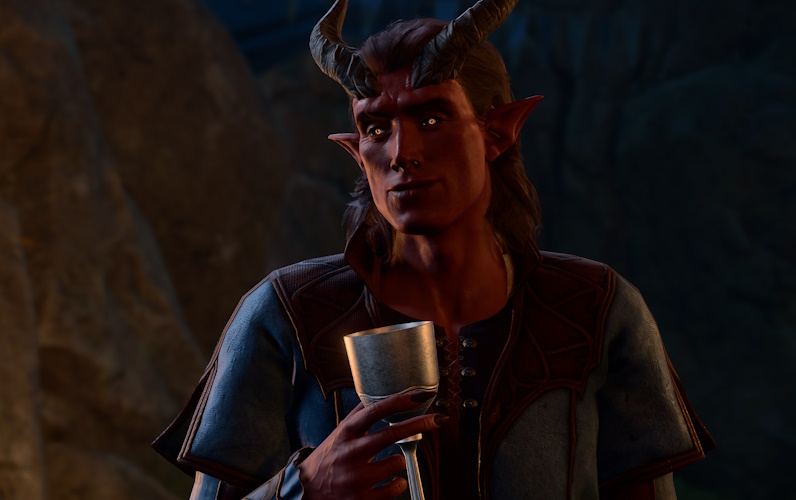
There’s also a decent amount of variety in terms of loot and items. Maybe this says more about the way I play these games – your mileage may vary – but I found I’d amassed a huge collection of everything from random junk to potions and scrolls by the time the campaign was into its final stretch. The ability to send items to camp instantaneously instead of having to sell them or leave them behind when over-encumbered is a life-saver – and a feature more games should take advantage of!
There are a couple of downsides here, though. Inventory management isn’t great, and when storing items in a chest at camp there’s no way to sort by category, meaning it can be a pain to find a specific item. Secondly, while there’s a huge number of individual items to find in the game, there wasn’t such a broad variety of cosmetic items to choose from, particularly in the armour department. Being able to recolour items with dye certainly helped, but a bit more cosmetic variety wouldn’t go amiss in a game like this – and I’d happily sacrifice a dozen or more of the random pieces of junk to get even one or two additional pairs of boots or suits of armour.
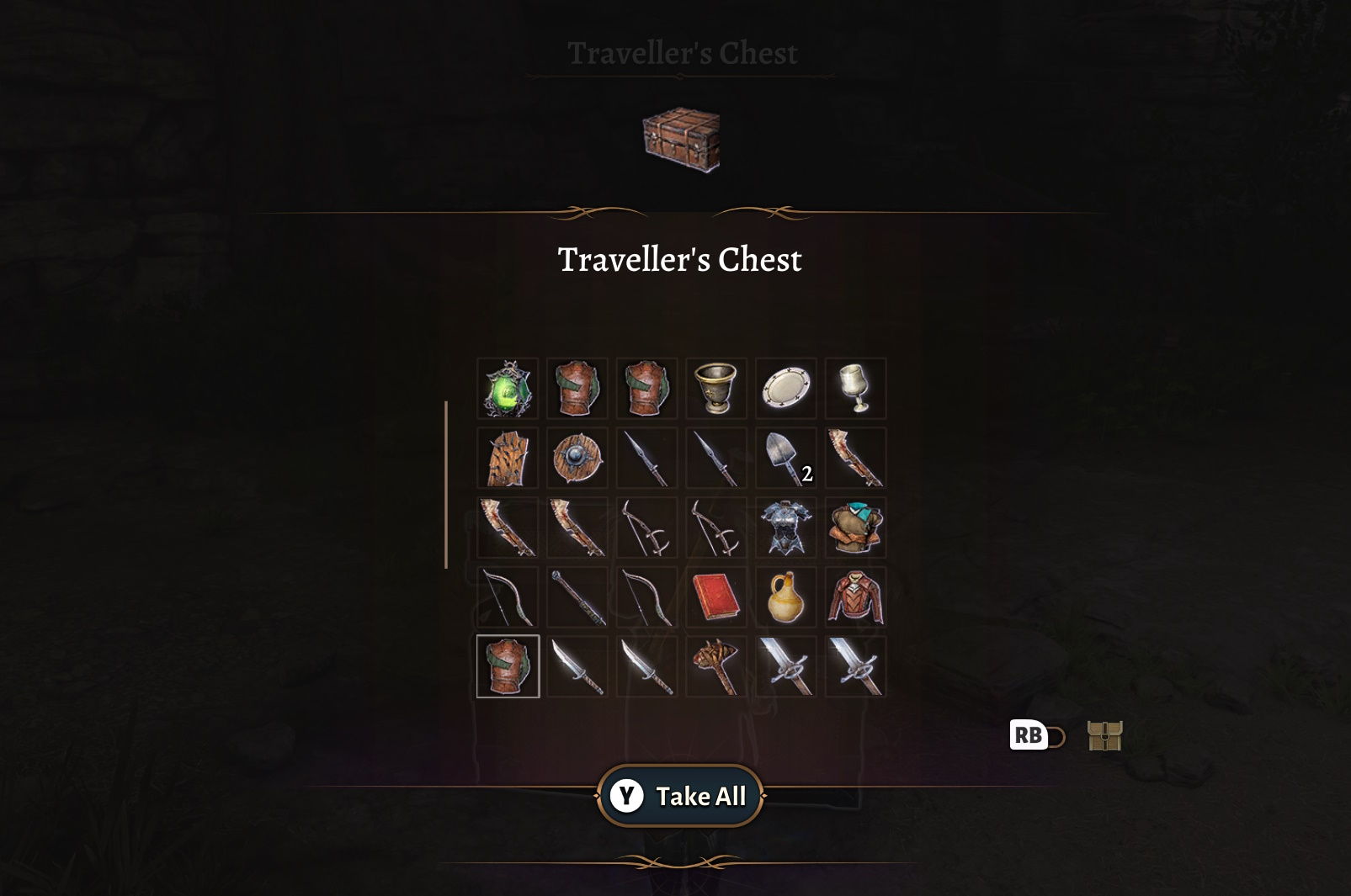
I chose to play Baldur’s Gate 3 using a control pad, not mouse and keyboard. That’s my preferred way to play, and I found the game’s “radial menus” to be a little cumbersome, but ultimately perfectly usable. The fact that combat is turn-based means you aren’t having to panic trying to hit buttons in short order, and there’s time to open each menu and find exactly the right spell, attack, or action that you need!
When the game launches on PlayStation 5 later this week, I would imagine the controls will be similar. Controller support on PC was good, and everything from moving and exploring the world to those turn-based actions worked well. I doubt PlayStation players, or PC players like myself using a control pad, will have any major issues.
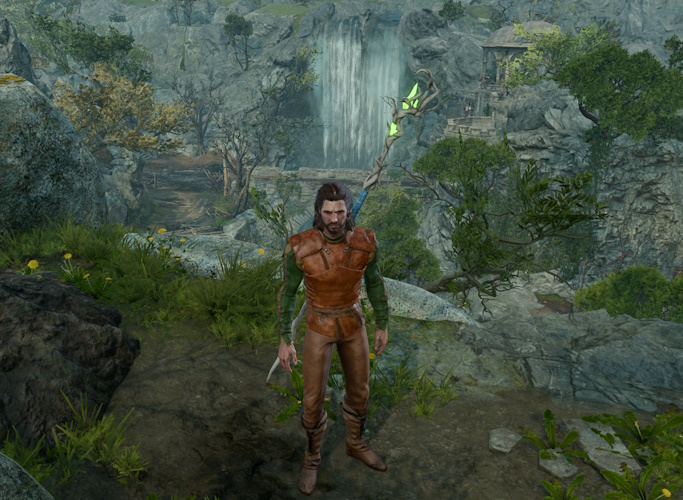
Let’s briefly talk about dice and randomness! Many events in Baldur’s Gate 3, from conversations to lockpicking and exploration to combat, rely on rolls of the digital dice. Some of these rolls are obvious and interactive – others are passive and happen in the background, though you’ll be informed of the outcome. A lot of games use “random number generation” to determine the outcome of all manner of things, but it’s obvious and even in-your-face in Baldur’s Gate 3. You can, of course “save-scum” to get around this – Baldur’s Gate 3 practically encourages save-scumming by implementing a free save system that allows you to save while in combat, right before a dice roll, and basically at any point.
Save-scumming will have to be the subject of an article of its own one day, but suffice to say I support the practice. It’s your game, and you should play it the way you want! If you get a once-in-a-single-playthrough encounter, with a positive or negative outcome literally hanging on the roll of a dice… why not go back and redo it if you want to get the “right” outcome? There were relatively few points where I felt I absolutely needed to get a specific outcome, and the game is incredibly adaptable in that regard. But it also definitely allows for easy re-dos thanks to the aforementioned free save system – and some generous in-game dice modifiers and boosters!
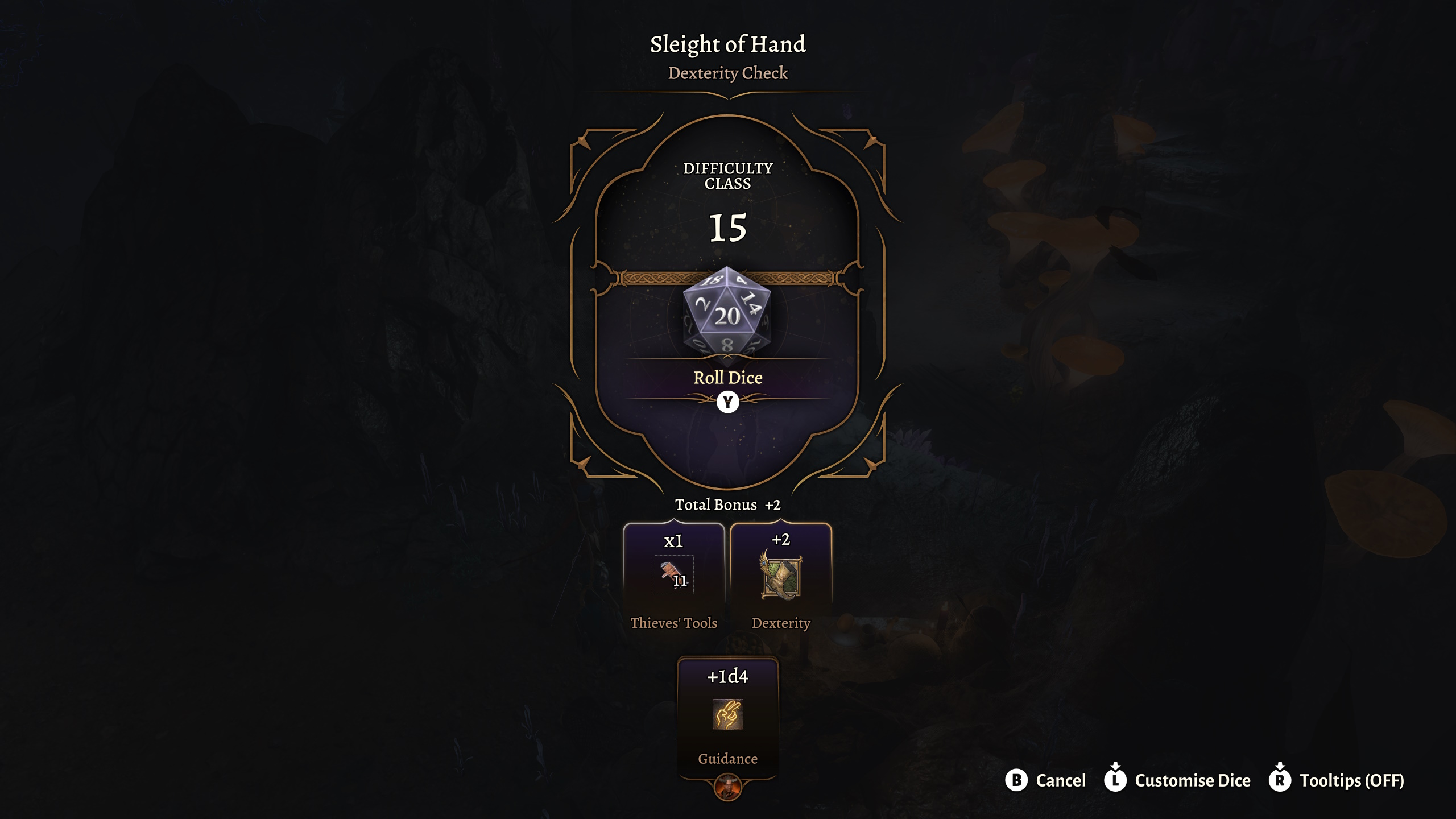
I picked up Baldur’s Gate 3 almost on a whim – I was looking for something to play while waiting for Starfield. I really didn’t know what to expect beyond a game that had been picking up some positive buzz, but I’m absolutely blown away by how much fun I had. It’s been an amazing ride, and in a way the fact that it was so unexpected only adds to that! Baldur’s Gate 3 hadn’t been on my radar at all in 2023, but it’s now a serious candidate for my “game of the year.” Check back in December, by the way, to see if it makes the cut!
I think I’ve said all I can without getting into the story too deeply. But I do have some thoughts on the details of the plot, so I hope you’ll join me in the days ahead for that. Or just swing by after you’ve beaten the game! Going in blind, as I did, is definitely recommended the first time around! The experience was much more enjoyable for me as I toddled and blundered my way through those opening hours of the game!
I don’t like to put a number score or a star rating on games when I review them. Check Metacritic if you want to get a mark out of ten! But if you want to know if I recommend Baldur’s Gate 3, the answer is an emphatic “yes.” This is the best game I’ve played in 2023 so far, and it’s not even close. There are some deep and complex systems that may seem offputting, and it’s a long game that requires a significant time commitment to make it all the way through. But even with those caveats – or rather, because of those selling-points – I can’t recommend it highly enough! You don’t need to be a Dungeons and Dragons player and you don’t need to have played a lot of CRPGs to get stuck into this game and have a fun time.
Baldur’s Gate 3 is out now for PC, will be released on PlayStation 5 on the 6th of September, and will be released on Xbox Series consoles in 2024. Baldur’s Gate 3 is the copyright of Larian Studios, and is based on Dungeons and Dragons which is owned by Wizards of the Coast and Hasbro. Some screenshots and promo art used above courtesy of Larian Studios and/or IGDB. This article contains the thoughts and opinions of one person only and is not intended to cause any offence.

